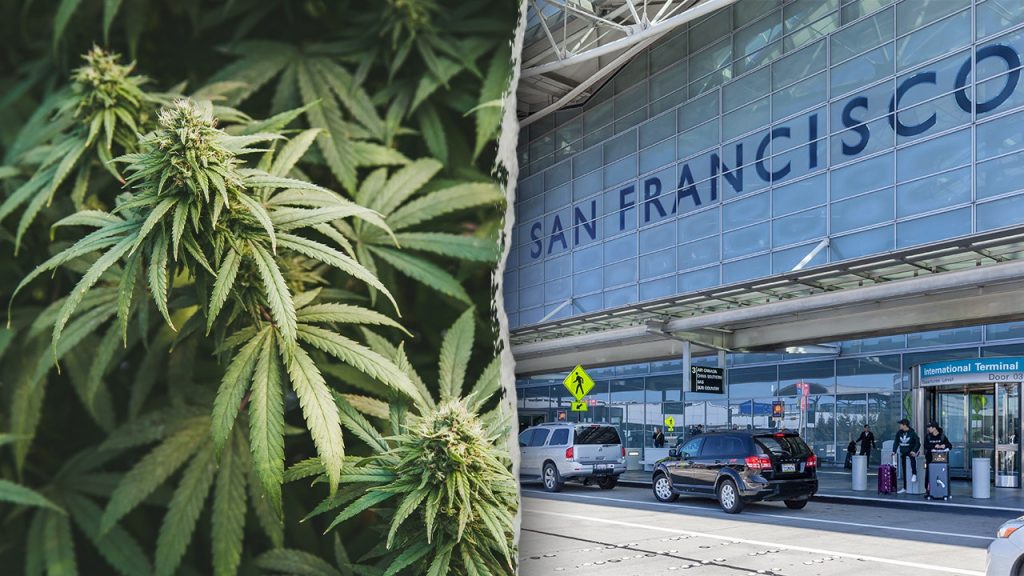A California woman has been arrested for allegedly attempting to smuggle 151 pounds of cannabis onto a flight at San Francisco International Airport. The suspect, identified as Diane Bahlawan, 34, was apprehended on May 6 while preparing to board a United Airlines flight destined for Frankfurt, Germany. Authorities discovered an extensive stash of vacuum-sealed marijuana hidden within her luggage, prompting charges related to marijuana transportation and burglary.
| Article Subheadings |
|---|
| 1) Arrest and Charges |
| 2) The Discovery of Cannabis |
| 3) Legal Proceedings |
| 4) Previous Incidents at the Airport |
| 5) Implications of the Case |
Arrest and Charges
On May 6, Diane Bahlawan was arrested at San Francisco International Airport while attempting to board a flight to Frankfurt, Germany. Airport security became suspicious of her luggage, which comprised four roller bags that appeared unusually heavy. Upon further inspection, law enforcement officials found a staggering 131 vacuum-sealed bags of cannabis hidden inside her luggage.
Bahlawan now faces multiple charges, including unlawful transport of marijuana and burglary. According to reports, she was able to post bail shortly after her arrest, indicating the seriousness of her alleged offenses.
The legal spotlight is firmly fixed on this case, which stands out due to the substantial amount of marijuana involved—a factor that could lead to significant legal repercussions. Experts in law enforcement suggest that such cases will continue to attract scrutiny as the legal landscape around cannabis evolves.
The Discovery of Cannabis
The discovery of the cannabis in Diane Bahlawan‘s luggage is striking not only due to the sheer volume but also because of the method employed to transport it. Airport officials discovered that the bags contained over 150 pounds of cannabis vacuum-sealed to conceal their contents effectively.
The tendency of individuals to try to evade airport security enhances the challenges faced by law enforcement agencies. This incident serves as a reminder of the ongoing issues related to drug smuggling across international borders. Despite California’s legalization efforts regarding cannabis, transporting it across state lines or internationally remains illegal.
Legal Proceedings
Bahlawan’s legal journey is just beginning, with an arraignment scheduled for June 2. This appearance will provide the first opportunity for her to formally respond to the charges. Legal experts note that the upcoming court dates will significantly shape how the case unfolds, including potential plea deals or the range of penalties she might face.
“It is unusual for my office to get a marijuana transportation case through the airport that involves this much marijuana,” stated Stephen Wagstaffe, the San Mateo County District Attorney.
The District Attorney’s office will be responsible for pursuing this case, which local officials describe as significant due to the unusual scale of the operation. Wagstaffe mentioned that his office typically handles smaller cases of this nature, therefore highlighting the remarkable circumstances surrounding Bahlawan’s arrest.
Previous Incidents at the Airport
This incident is not an isolated case. In February, a 25-year-old Australian national was arrested at the same airport for attempting to transport 44 pounds of methamphetamine. Additionally, Customs and Border Protection (CBP) made headlines in April when they seized around 150,000 cigarettes from a couple arriving from Mexico.
These examples point to a troubling trend within aviation points, particularly at San Francisco International Airport, where authorities have made several high-profile drug-related arrests recently. Such occurrences raise questions about airport security measures and how effectively they are functioning in the face of evolving smuggling tactics.
Implications of the Case
The implications of Diane Bahlawan‘s case extend beyond her legal challenges. It reflects broader issues related to drug laws in the United States, particularly concerning cannabis. Even as various states have legalized marijuana for recreational use, transporting it across state and international boundaries remains illegal.
This dichotomy may have a chilling effect on individuals considering transporting cannabis across state lines, regardless of their intention. The legal repercussions could entail significant fines or imprisonment, which serve to discourage such actions. The judicial outcome could also influence public perception surrounding the legalization and regulation of cannabis.
As local authorities prepare for Bahlawan’s court appearance, they will be keenly observed by both advocates and critics of drug legalization, as the case may set a legal precedent in California.
| No. | Key Points |
|---|---|
| 1 | Bahlawan attempted to smuggle 151 pounds of cannabis onto a flight from San Francisco to Frankfurt. |
| 2 | Airport security flagged her luggage, leading to the discovery of the marijuana. |
| 3 | She has been charged with unlawful transport of marijuana and burglary. |
| 4 | There have been other significant drug-related arrests at San Francisco International Airport recently. |
| 5 | The case may influence public perception of cannabis legalization and regulation. |
Summary
The arrest of Diane Bahlawan for allegedly attempting to smuggle a substantial quantity of cannabis onto an international flight raises significant legal and societal questions. With her case being particularly unusual for local authorities, it poses challenges that could reverberate throughout the cannabis discourse in California. As the legal proceedings unfold, they will be closely monitored as a reflection of the current state of drug laws and enforcement strategies in the United States.
Frequently Asked Questions
Question: What charges has Diane Bahlawan faced?
She is facing charges for unlawful transport of marijuana and burglary.
Question: When is Bahlawan’s court appearance scheduled?
Her initial arraignment in court is scheduled for June 2.
Question: Why is this case significant?
It is significant due to the large quantity of cannabis involved and its implications for the legal landscape surrounding drug transportation in the U.S.


